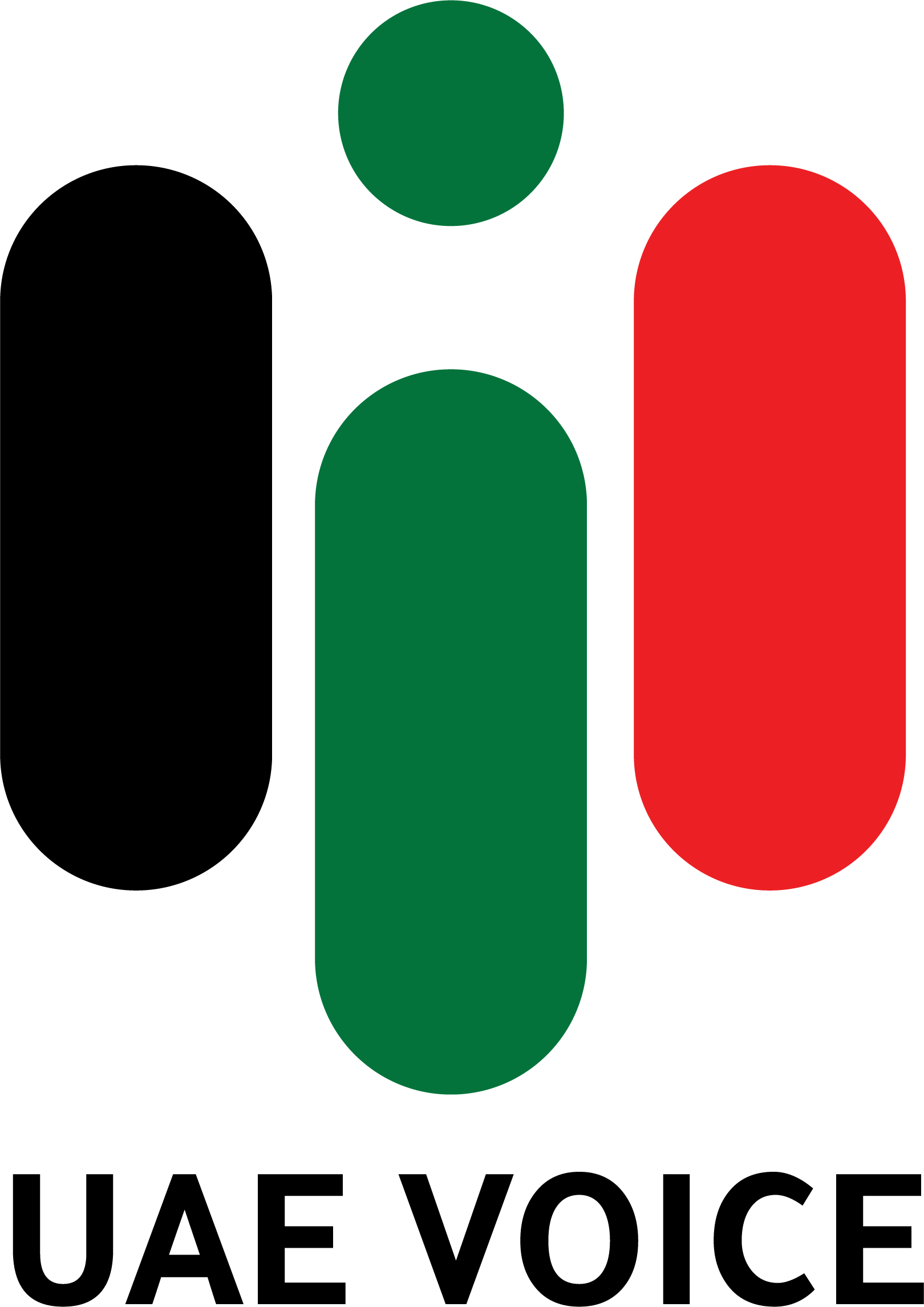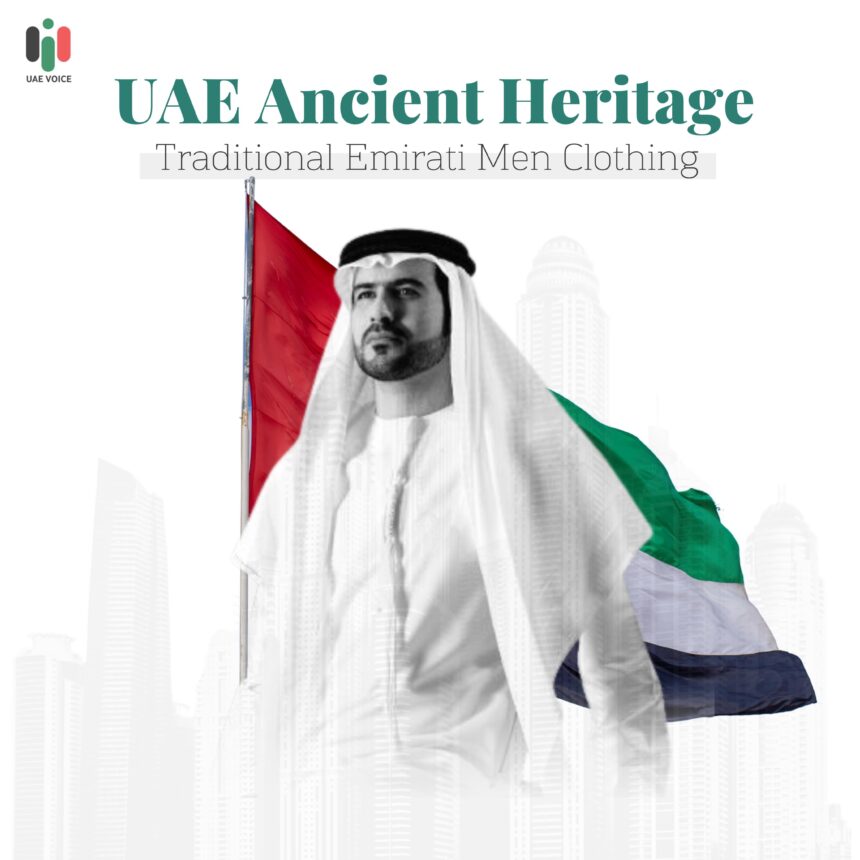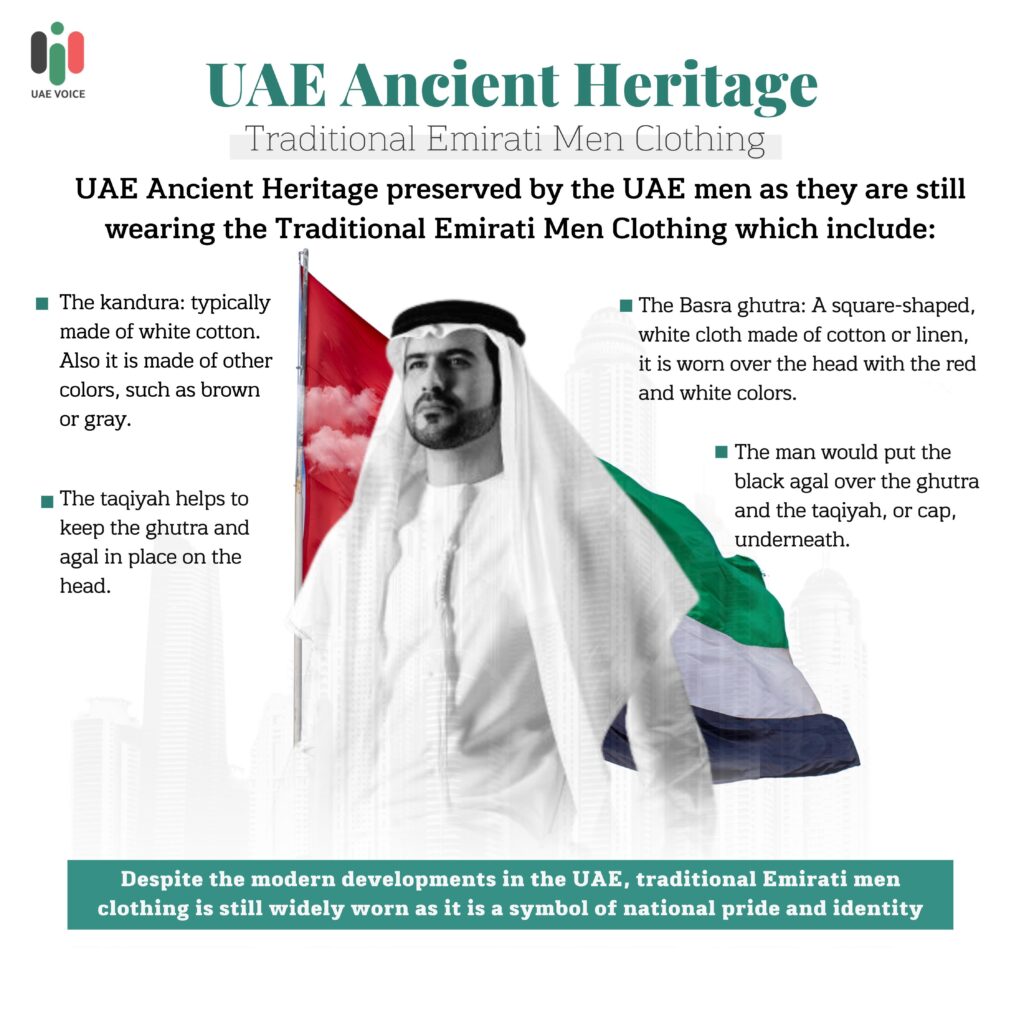UAE Ancient Heritage preserved by the UAE men as they are still wearing the Traditional Emirati Men Clothing.
In fact, the design of the Traditional Emirati Men Clothing is according to the rules of the Islamic religion.
And also it is suitable for the hot weather prevailing in the emirates.
The United Arab Emirates (UAE) preserves its ancient heritage traditions, and one of the most important of these is traditional clothing.
While the traditional Emirati Men clothing varies from region to region in the UAE, with some differences in design and color.
For example, the kandura in the Eastern Region is typically white, while it is typically dark blue in the Western Region.
The history of Emirati traditional men’s clothing.
The Emirati traditional men’s clothing returns back to the Bedouin culture.
Which prevailed in the Arabian Peninsula.
Moreover, the Bedouins were nomadic people who lived in the desert.
And their clothing design was practical and comfortable to suit the harsh desert environment.
In fact, the Emirati traditional men’s clothing has evolved over time, but it has retained its basic features.
Emirati men today are still widely wearing the kandura, ghutra, and agal.
Also the Emiratis consider them as symbols of Emirati culture and identity.
The traditional Emirati clothing for men includes Kandura, Ghutra, Agal, Sarrari and more.
Emirati Kandura (Dishdasha):
The kandura has not changed much in its basic design over time.
Despite the differences that have occurred in the way of its cutting and sewing.
The kandura is typically made of white cotton.
But it’s also made of other colors, such as brown or gray.
Men wear the Kandura over a pair of trousers.
While a headscarf and a black rope often accompany the kandura.
In the past, Emirati men wore the “Umm Furokha” kandura.
Which in the summer was made of las or sharbat fabric.
The furokha was made of gold thread, and the man wore a white ghutra, “al-Desmaal,” on his head.
The UAE imported this ghutra from the coasts, especially from Yemen.
The Basra ghutra:
A square-shaped, white cloth, typically made of cotton or linen.
Worn over the head and held in place by an agal, a black rope worn around the head.
Moreover, it is special for its red and white colors.
While the scarf is usually made from wool.
The man would put the black agal over the ghutra and the taqiyah, or cap, underneath.
In fact, the taqiyah helps to keep the ghutra and agal in place on the head.
In some areas, men would wrap the ghutra around their heads without an agal.
While the Emiratis call this al-Asamah.
Under the kandura, the man would wear a wizar, or izaar.
A rectangular piece of fabric that is two meters long and one meter wide.
The man would wrap the wizar around the lower half of his body.
The UAE usually imports it from Indian merchants.
During the summer the Emiratis were wearing maksur which was from sharbat fabric,”a type of light fabric.”
The man would also wear sandals on his feet.
Furthermore, sandals are a simple type of shoe, and the most famous types are “sarrari” and “boskap.”
Indian sandals were also popular.
They often used black and white colors for men’s sandals.
Changes in traditional Emirati clothing
During the recent years, there have been some changes in traditional Emirati clothing.
For example, the kandura has become shorter and more fitted, and the ghutra has become less elaborate.
However, the basic features of traditional Emirati clothing remain the same.
Despite the modern developments in the United Arab Emirates, traditional Emirati clothing is still widely worn in the country till today.
Due to the fact that it is a symbol of national pride and identity.
It is also an important part of tourism, as it attracts tourists from all over the world.
Read More:
UAE Flag- All Information You Need To Know
Sustainable Human Heritage – The Craft of “Sadou”
Longest Space Mission in Arab History Done by Emirati Astronaut
Emirati Passport: the First In Middle East & the 12th Globally






